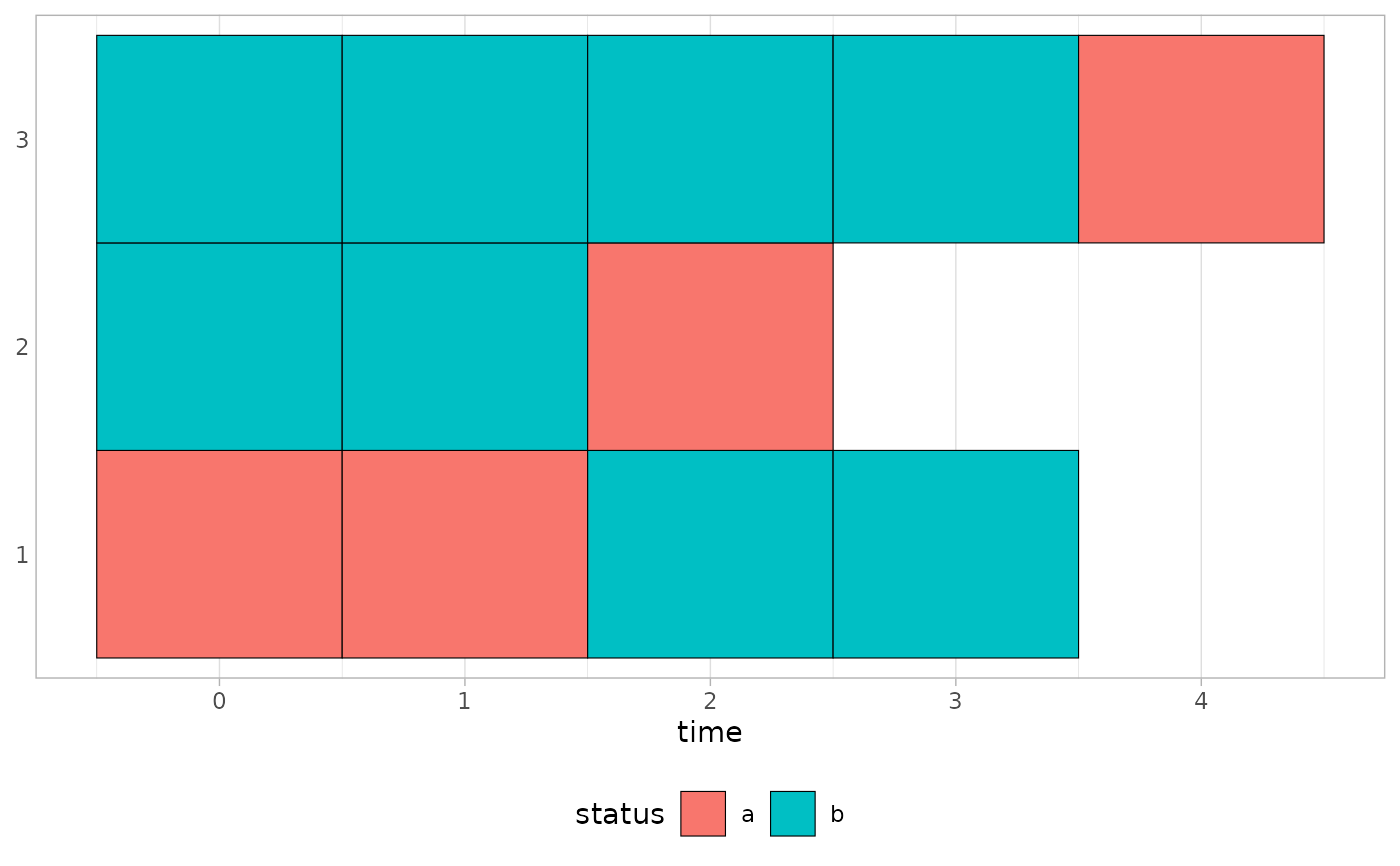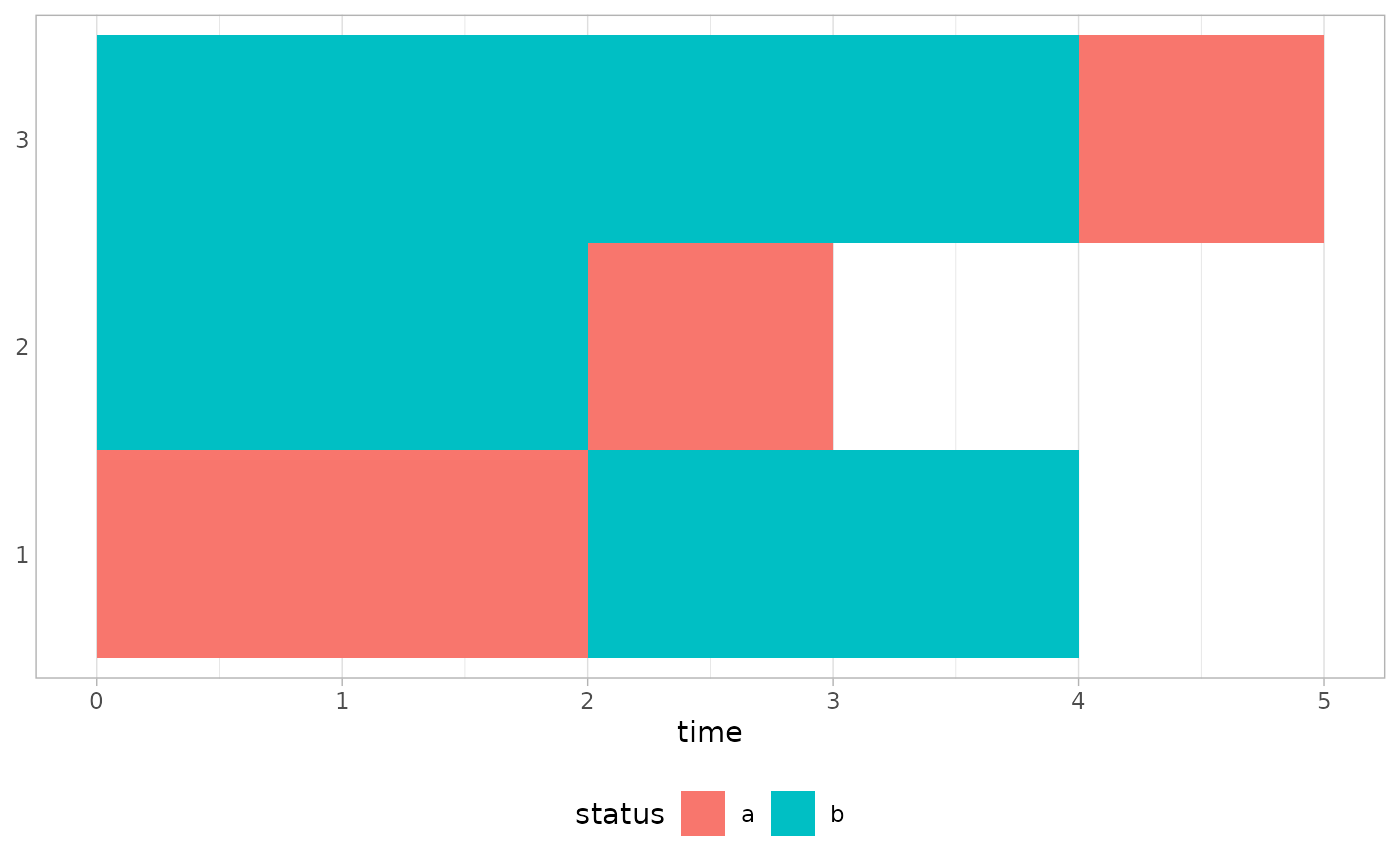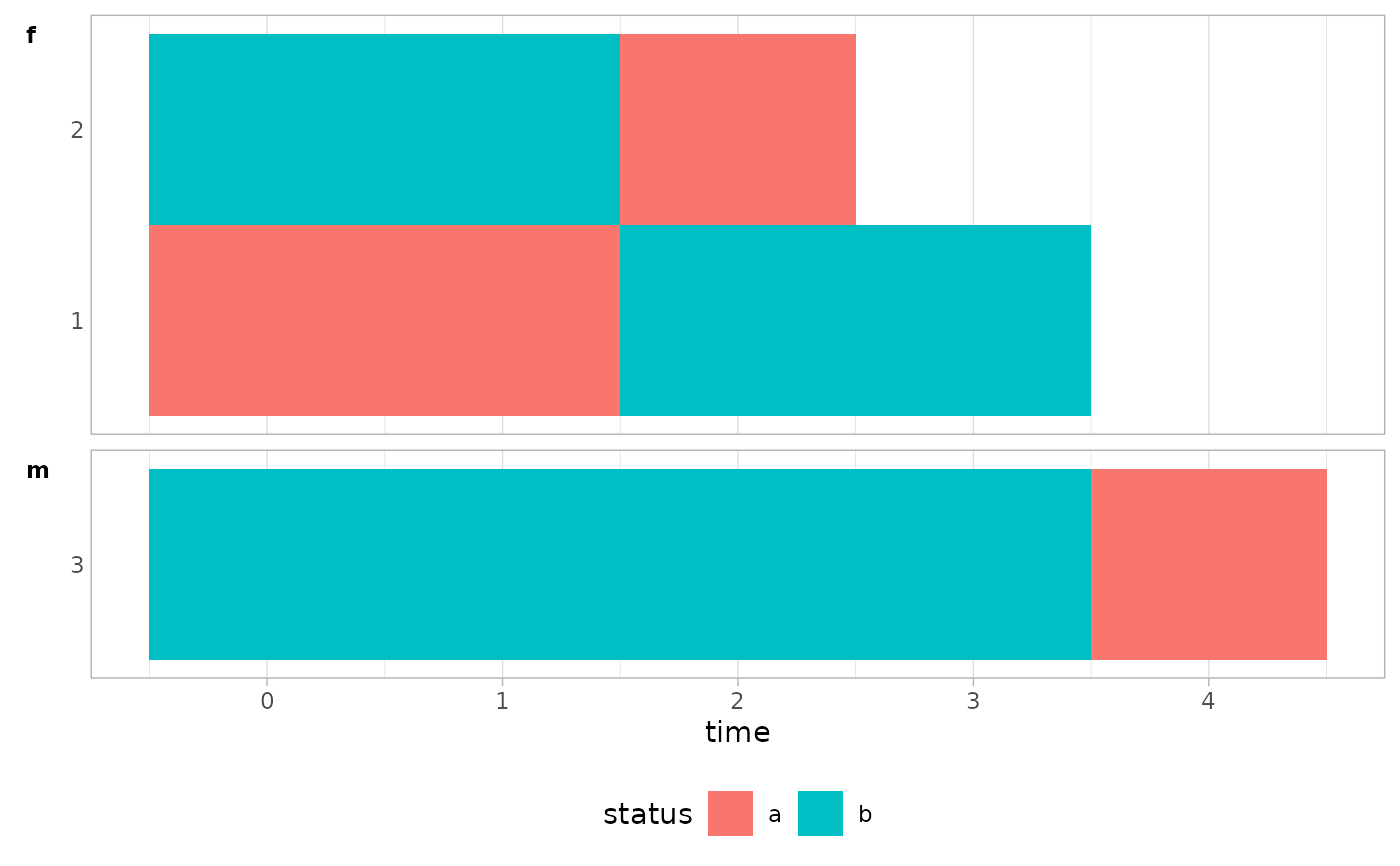Create a trajectory index plot (similar to sequence index plot) from a data frame in long or period format.
Usage
plot_trajectories(
data,
id,
time,
fill,
by = NULL,
sort_by = NULL,
nudge_x = NULL,
hide_y_labels = NULL,
facet_labeller = ggplot2::label_wrap_gen(width = 50, multi_line = TRUE),
...
)
plot_periods(
data,
id,
start,
stop,
fill,
by = NULL,
sort_by = NULL,
nudge_x = NULL,
hide_y_labels = NULL,
facet_labeller = ggplot2::label_wrap_gen(width = 50, multi_line = TRUE),
...
)Arguments
- data
A data frame, or a data frame extension (e.g. a tibble).
- id
<
tidy-select> Column containing individual ids.- time
<
tidy-select> Time variable.- fill
<
tidy-select> Variable mapped tofillaesthetic.- by
<
tidy-select> Optional variables to group by.- sort_by
<
tidy-select> Optional variables to sort trajectories.- nudge_x
Optional amount of horizontal distance to move.
- hide_y_labels
Hide y labels? If
NULL, hide them when more than 20 trajectories are displayed.- facet_labeller
Labeller function for strip labels.
- ...
Additional arguments passed to
ggplot2::geom_tile()- start, stop
<
tidy-select> Start and stop variables of the periods.
Note
plot_trajectories() assumes that data are stored in a long format (i.e.
one row per unit of time). You can use tidyr::pivot_longer() or
periods_to_long() to transform your data in such format. By default, tiles
are centered on the value of time. You can adjust horizontal position with
nudge_x. By default, each row is assumed to represent one unit of time and
represented with a width of 1. You can adjust tiles' width with width.
plot_periods() is adapted for period format with a start and a stop
variable. You can use long_to_periods() to transform your data in such
format. Beginning and ending of each tile is determined by start and
stop arguments.
Examples
d <- dplyr::tibble(
id = c(1, 1, 1, 1, 2, 2, 2, 3, 3, 3, 3, 3),
time = c(0:3, 0:2, 0:4),
status = c("a", "a", "b", "b", "b", "b", "a", "b", "b", "b", "b", "a"),
group = c("f", "f", "f", "f", "f", "f", "f", "m", "m", "m", "m", "m")
)
d |> plot_trajectories(id = id, time = time, fill = status, colour = "black")
 d |> plot_trajectories(id = id, time = time, fill = status, nudge_x = .5)
d |> plot_trajectories(id = id, time = time, fill = status, nudge_x = .5)
 d |> plot_trajectories(id = id, time = time, fill = status, by = group)
d |> plot_trajectories(id = id, time = time, fill = status, by = group)
 d2 <- d |>
dplyr::mutate(end = time + 1) |>
long_to_periods(id = id, start = time, stop = end, by = status)
d2
#> # A tibble: 6 × 4
#> # Groups: id [3]
#> id time end status
#> <dbl> <int> <dbl> <chr>
#> 1 1 0 2 a
#> 2 1 2 4 b
#> 3 2 0 2 b
#> 4 2 2 3 a
#> 5 3 0 4 b
#> 6 3 4 5 a
d2 |> plot_periods(
id = id,
start = time,
stop = end,
fill = status,
colour = "black",
height = 0.8
)
d2 <- d |>
dplyr::mutate(end = time + 1) |>
long_to_periods(id = id, start = time, stop = end, by = status)
d2
#> # A tibble: 6 × 4
#> # Groups: id [3]
#> id time end status
#> <dbl> <int> <dbl> <chr>
#> 1 1 0 2 a
#> 2 1 2 4 b
#> 3 2 0 2 b
#> 4 2 2 3 a
#> 5 3 0 4 b
#> 6 3 4 5 a
d2 |> plot_periods(
id = id,
start = time,
stop = end,
fill = status,
colour = "black",
height = 0.8
)
